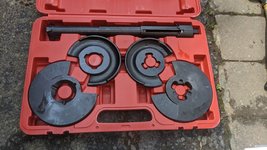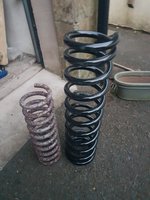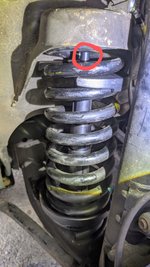I'm a real novice at DIY auto maintenance. I'm trying to remove front springs with Klann clone, new, from eBay

Never removed or observed someone else removing springs in my life before. Since this a potentially life threatening procedure, I need some pep talk.
I've read instructions and watched a YouTube video so I grasp the process. I've practiced already and was able to compress the spring about 3/4 of the way. I need to know if:

Never removed or observed someone else removing springs in my life before. Since this a potentially life threatening procedure, I need some pep talk.
I've read instructions and watched a YouTube video so I grasp the process. I've practiced already and was able to compress the spring about 3/4 of the way. I need to know if:
- both pressure plates are installed correctly (lower plate's skirt looking up, upper plate's skirt looking down)
- 3 point interlock on top of compressor is engaged.
- I'm able to compress the spring 3/4 of the way










